|
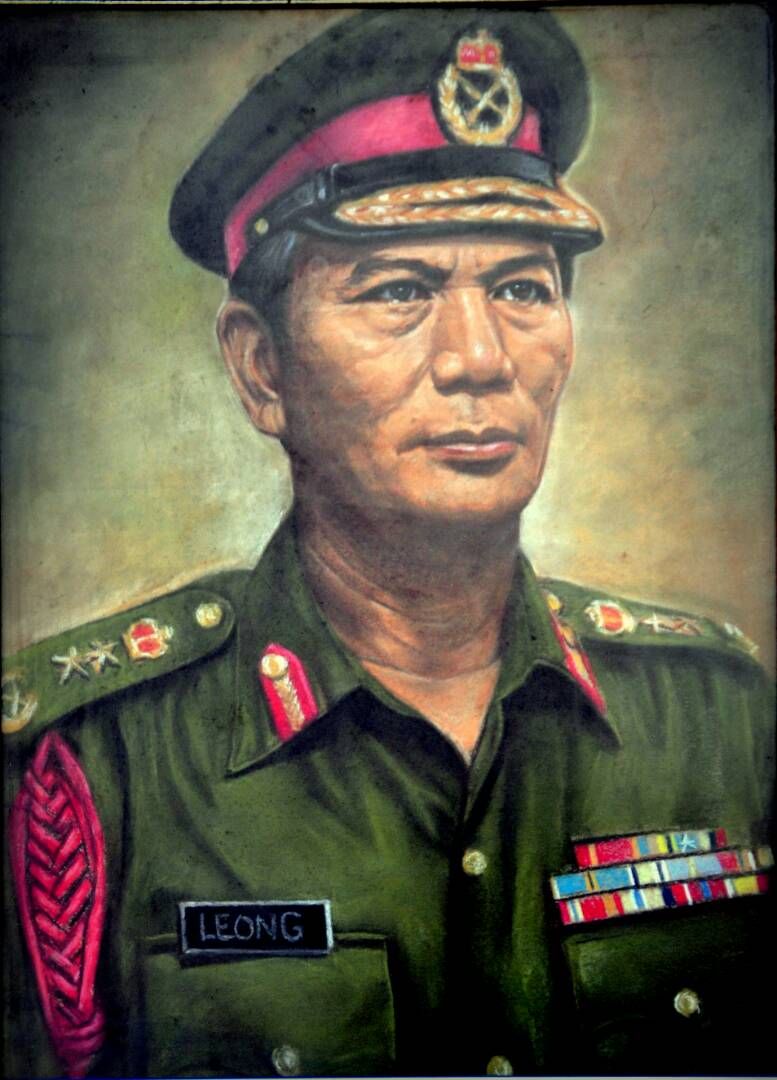 |
|
MACVA Tribute To Major General Dato' Leong Siew Meng (Rtd)
DSNS PMS (Pingat Maharaja Salasie) Ethiopia PPT JSM AMN PJK
(28 Nov 1931 - 6 May 1986)
In 1952, Malaya is 5 years away from being an independent country. Malaya had its own standing army in the Malay Regiment which was formed in 1933. Its first two battalions fought against the invading Japanese Army in World War II and acquitted themselves very well against the enemy. The Battle of Pasir Panjang in which Lt Adnan Saidi distinguished himself is well documented.
Malaya was still in a state of war, this time against the Communists Insurgents of the Communist Party of Malaya. Known as the Malayan Emergency, it was fought from 1948 to 1960. The Malay Regiments had expanded to 3 battalions in 1948 and only Malays are being recruited to join the Army.
The clarion call for all citizens to take up arms against the Communist Insurgents was made by General Sir Gerald Templer, the British High Commissioner in Malaya. In July 1952, the Federation Regiment Bill was passed in the Federal Legislative Council paving way for the development of the first multiracial infantry unit.
With the formation of the Federation Army Brigade, the Federation Brigade Signals Squadron was formed on 15 November 1952 which later be known as Malaysian Royal Signals Regiment. 15th of November is celebrated by Malaysian Royals Signals as its Corps Day.
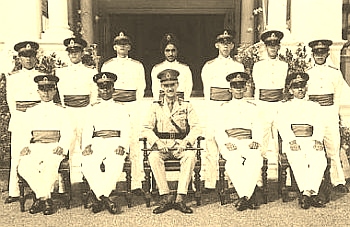 |
|
With eleven of the twelve cadets chosen to become the first officers of the Federation Regiment. The names tell the story. Left to right, front row: Khong Kim Khong, Abdullah Samsuddin, Gerald Templer, Victor Stevenson, Asna Mohamed Suta; rear row; Gui Poh Chui; Thong Chee Sin; Leong Siew Meng; Lakhbir Singh Gill, Ng Boon Hua, Lai Chung Wah, Amiruddin Mustapha Al-Bakri. Source: Templer:Tiger of Malaya. |
The call to other ethnic Malayans to join the Army attracted many young men. General Sir Gerald Templer himself had a hand in the selection of the first group of applicants, dubbed Templer's 12 or Templer’s Superb Men. Among the Templer's 12 was a young man from Ipoh, named Leong Siew Meng. He was born in Kajang on 28 November 1931 but was raised in Ipoh by his tin miner father, Dato' Leong Ah Kow.
In early 1953, the Templer's 12 set off for cadet training at Eaton Hall, England. They were to continue their training at the prestigious Royal Military Academy Sandhurst, England and all were commissioned together as Second Lieutenant (2Lt) on 3 February 1955.
|  |
2Lt Leong Siew Meng was posted into the young Federation Signals Regiment, the first Malayan to be so honoured. Prior to this, the officers were seconded from the British Royal Signals or those from the Signals Platoons of the Malay Regiments. He later attended the Signals Young Officers' Course at the British School of Signals, Catterick, United Kingdom.
He returned to Federation Malaya on 30 August 1955 and served 1st Federation Division Signals Regiment as a Troop Commander. On 1 October 1955, he was Second in Command of 2nd Federation Infantry Brigade Signals Squadron.
From June to December 1956, he was attached to the 2nd Infantry Division Signals Regiment, Royal Signals of the British Army of the Rhine (BOAR) in West Germany.
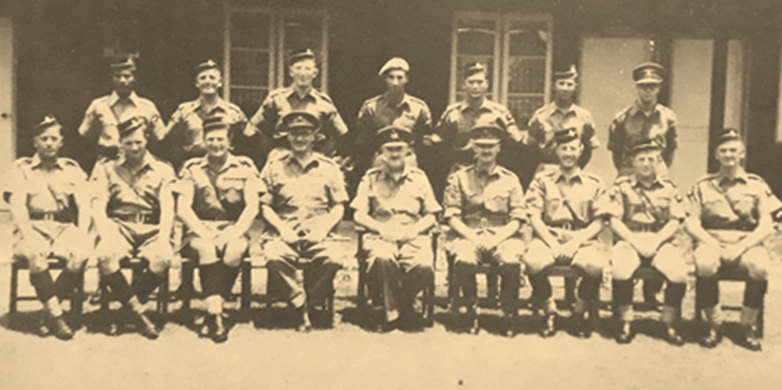 |
| Signal Officer-in-Chief Visit on 3 March 1959. Captain Leong Siew Meng is standing third from right. |
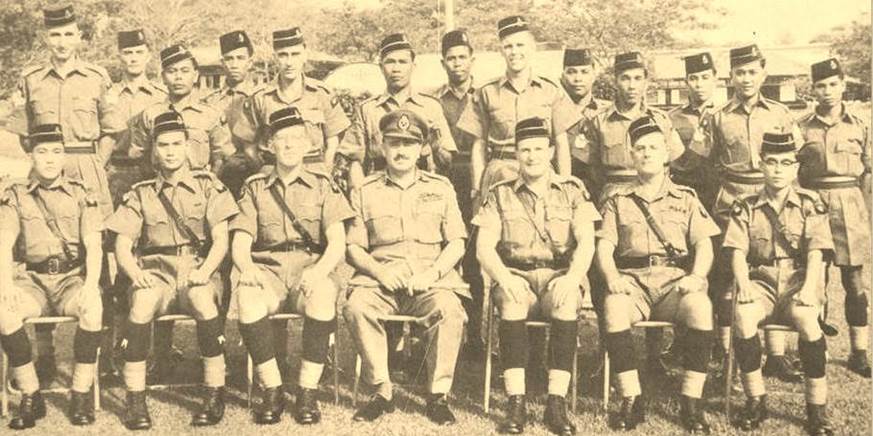 |
| Lieutenant General Dato’ Geoffrey Francis H. Brooke, GOC Federation Army Farewell Visit on October 1959. Captain Leong Siew Meng is seated second from left. |
 |
| Armed Forces Signals Squadron. Hockey Team Champion. Langrishe Cup 1960.
Major Leong Siew Meng is standing first left. |
In 1957, Federation Signals Regiment consists of 1st and 2nd Federation Infantry Brigade Signal Squadron and Federation Army Signal Squadron. A series of Regimental and staff appointments followed and in 1960, the newly promoted Major Leong was selected to attend the prestigious Staff College at Camberly, England.
When Indonesia declared its Confrontation against the newly formed Malaysia in 1963, Major Leong with 2 Sergeants and 25 Signalers was dispatched to Tawau to raise the East Brigade Signals Squadron which was designated as 5 Brigade Signals Squadron later. They left Port Swettenham onboard MV KUNAK to Singapore en route to Labuan. They arrived and put up at Kima Road on 20 August 1963.
Communication from Labuan to Ministry of Defence in Kuala Lumpur was established on 1700 hours 22 August 1963. Major Leong also acts as Malaysian Armed Forces Borneo (MAFBOR) Communications Adviser. On 1 January 1964, 5 Brigade Signals Squadron was established at Sawmill Camp, Tawau with him as it first Officer-in-Command.
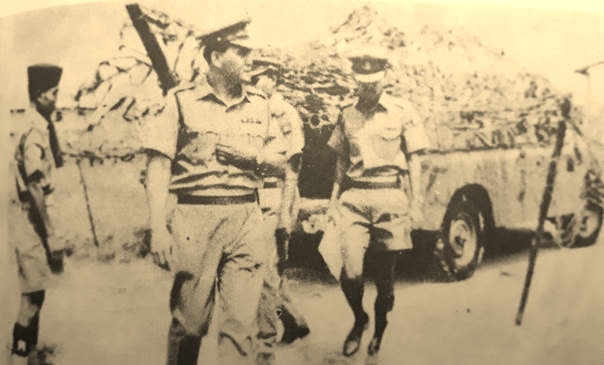 |
| Visiting 5 Brigade Signals Squadron. September 1966. |
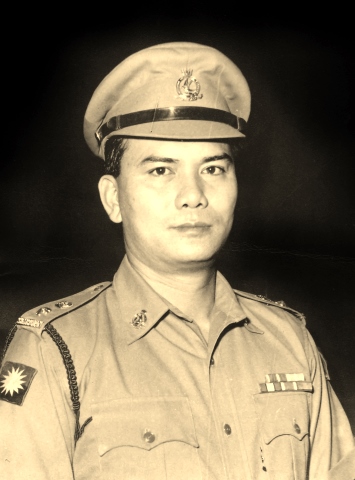 |
| Lieutenant Colonel Leong Siew Meng. |
On 2 November 1964, he was selected to attend the British Joint Services Staff College (JSSC) at Latimar, England. On return in June 1965, he was appointed as Staff Officer Grade 1 (Staff) Army at OPSCO. In June 1966 he promoted as a Lieutenant Colonel and took command of West Malaysia Signals Regiment, the first local officer to do so; the regiment later became 2 Division Signals Regiment.
On 1 August 1967, he was promoted as a Colonel and subsequently took over the appointment as the Chief Signals Officer (CSO) on 21 August 1967 from Colonel David Sylvester-Bradley. He made history by being the first local officer to become CSO. Colonel Leong was made a Brigadier General on 18 May 1969, right in the midst and chaos of the infamous May 13, 1969 incident.
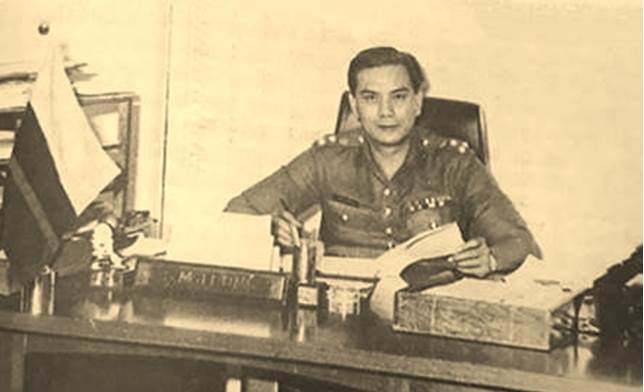 |
Dato’ Leong in Chief Signal Officer Office. |
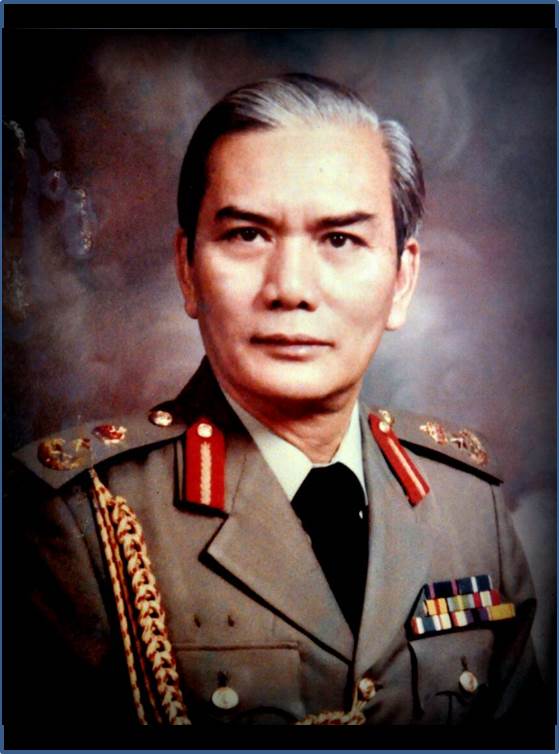 |
| Brigadier General Leong Siew Meng. |
As the first Malaysian CSO, he was expected to not only maintain the high standard of achievement of the Corps, but also to improve on its performance. He set about rationalizing the tactical requirement and development of communications for the Army; he also streamlined the Tri-Service communications requirement of the Malaysian Armed Forces (MAF). This was also the time when the Corps was responsible for Tri-Service communications requirements, especially in the areas of cryptography, communications security and other electronic support measures.
He played a significant part in enhancing the role of MAF in Frequency Assignment Committee for Singapore, Malaysia and Brunei (FASMAB), the body that coordinated and controlled the allocation and usage of the radio frequency spectrum in the region. To this day, MAF is still a member of that Committee and continues to participate in the World Radio Conference (WRC), the world body for the control and usage of the radio frequency spectrum.
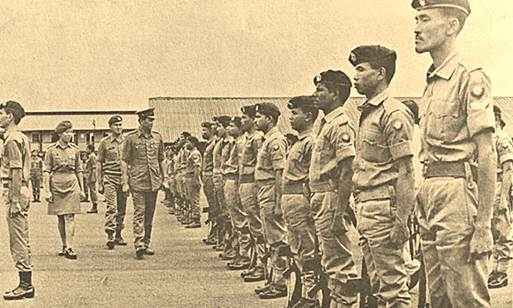 |
| CSO Parade Inspection during Annual Camp Training, Batu Tiga Camp. Mentakab 1973. |
In his time as the CSO, he initiated the project to revamp the communication centre as well as the telephone facilities for the Ministry of Defence. This resulted in the implementation of the first electronic exchange in the country, with the direct-in-dialing facilities for the Ministry that is still operational today.
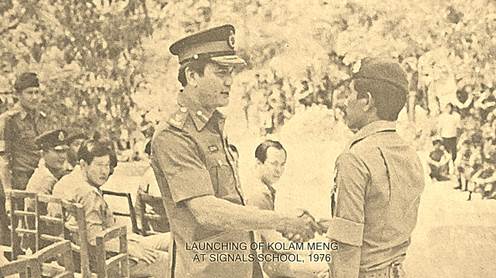 |
| Launching of Kolam Meng at Signals School in 1976. |
As the youngest CSO in the Commonwealth, he was invited and honoured to present a paper on the problems and techniques of High Frequency (HF) Communications in the tropics. The paper touched on areas that affected radio communications as it was known then. Among the subjects were the solar flares, the atmospheric ionization, and the use of the various types of radio antennae, amplitude modulation and the switching to a lower frequency for night time operations. For many years his paper set the standard for such system in the military sphere of the time.
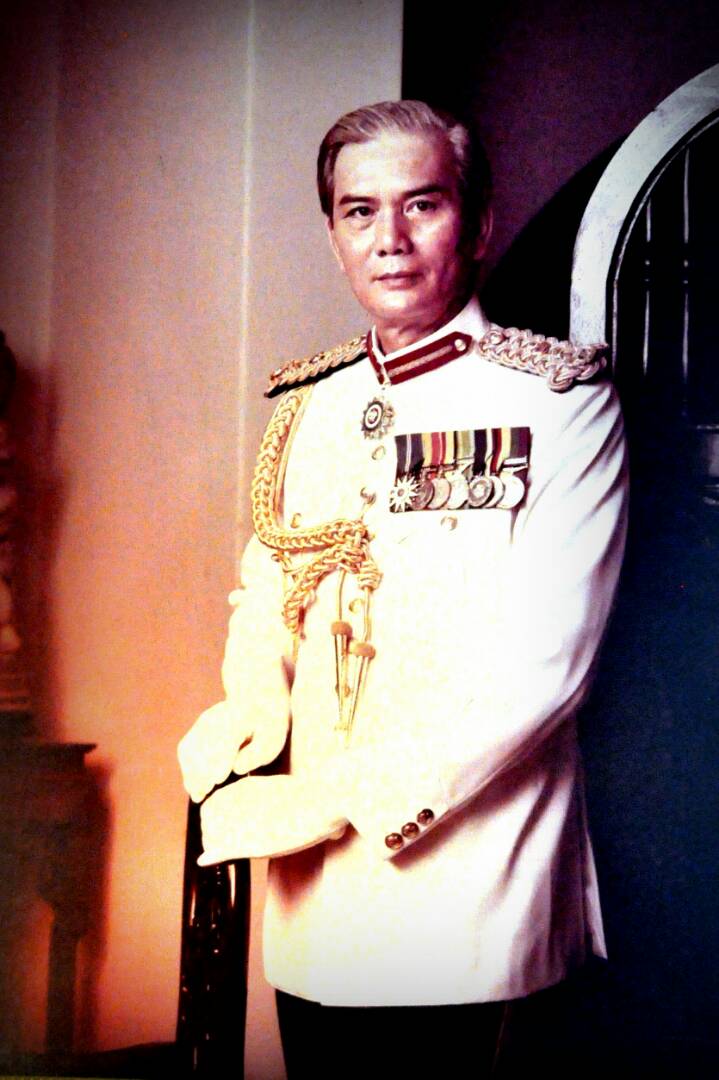 |
| Dato’ Leong. |
Brigadier General Leong, as CSO, introduced many innovative ideas to enhance the standard of professionalism in the Corps. To further the cause of morale and esprit de corps, he set up the Signals Education Fund (Tabung Yayasan Amanah Pelajaran Rejimen Semboyan DiRaja). This foundation provides assistance to school-going children of personnel of the Corps, whether still in service or retired.
He was also instrumental in encouraging the setting-up the Veterans Association for the Corps which would serve to provide welfare assistance to those in need and at the same time serves as a conduit for continuing interaction with one another. He was at the helm of the Signals Regiment for a period of 13 years until 21 May 1980.
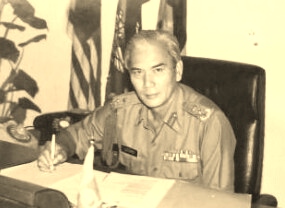 |
| Dato' Leong in Commandant Office, Defence College. |
On 26 June 1980, after handling over the CSO appointment to Brigadier General Dato’ Idris bin Ahmad; he attended the US Army International Fellowship Course at War College, United States. On return, he assumed the post of Commandant of the Armed Forces Defence College and was promoted to Major General on 1 June 1983.
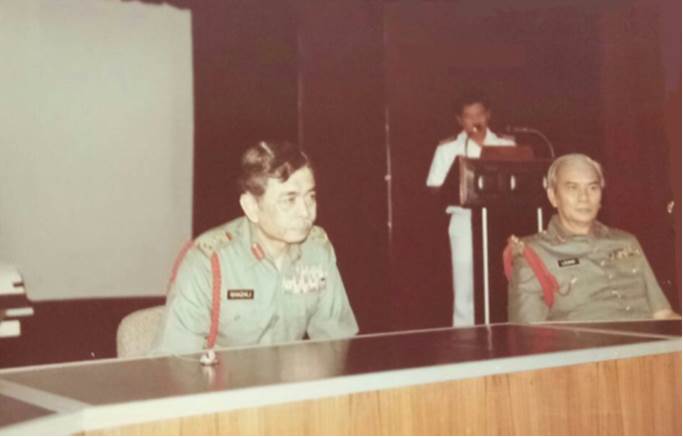 |
| Dato’ Leong with Chief of Defence Force YB General Tan Sri Dato Mohd Ghazali bin Dato Mohd Seth. |
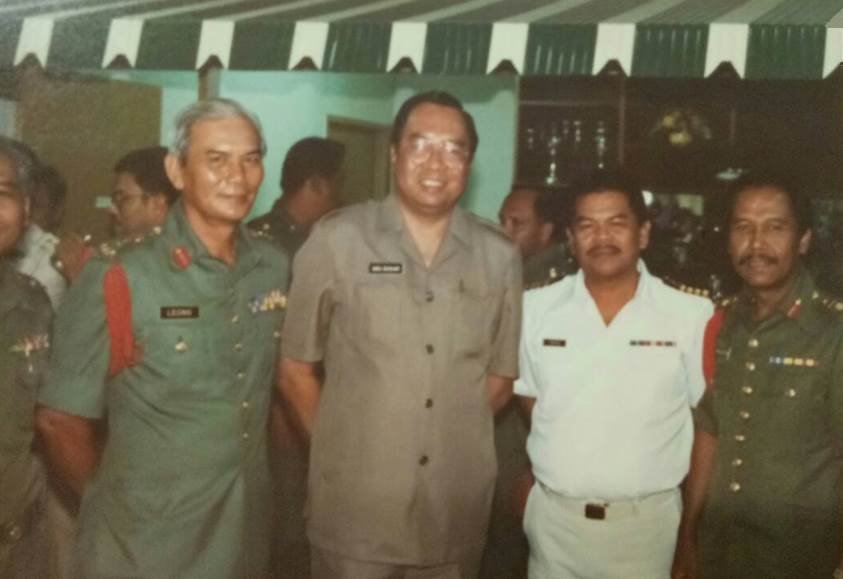 |
| Dato’ Leong with Deputy Defence Minister Datuk Abang Abu Bakar bin Datu Bandar Abang Haji Mustapha. |
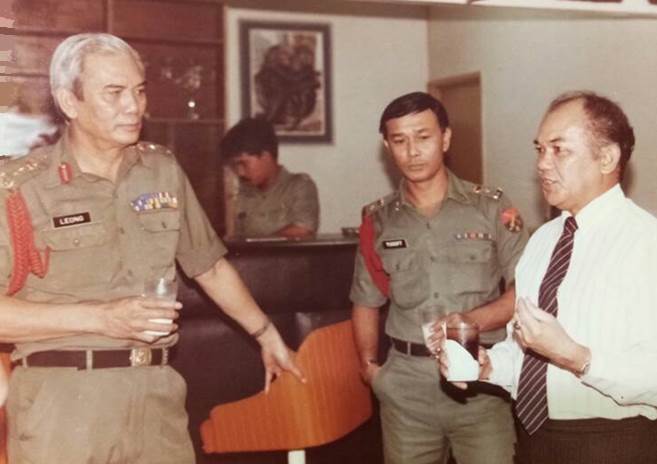 |
| Dato’ Leong with YAA Justice Tan Sri Dato’ Abdul Hamid. |
He held the post until his retirement on 1 February 1986 after 33 years of dedicated service to King and Country. He married Madame Choong Siok June on 26 May 1956 and has 2 daughters. They were divorced on 25 November 1969 and he married Miss May Lee. Sadly, he did not get to enjoy a well-deserved retirement. Major General Dato' Leong Siew Meng SN:200008 died on 6 May 1986 as a result of a heart attack.
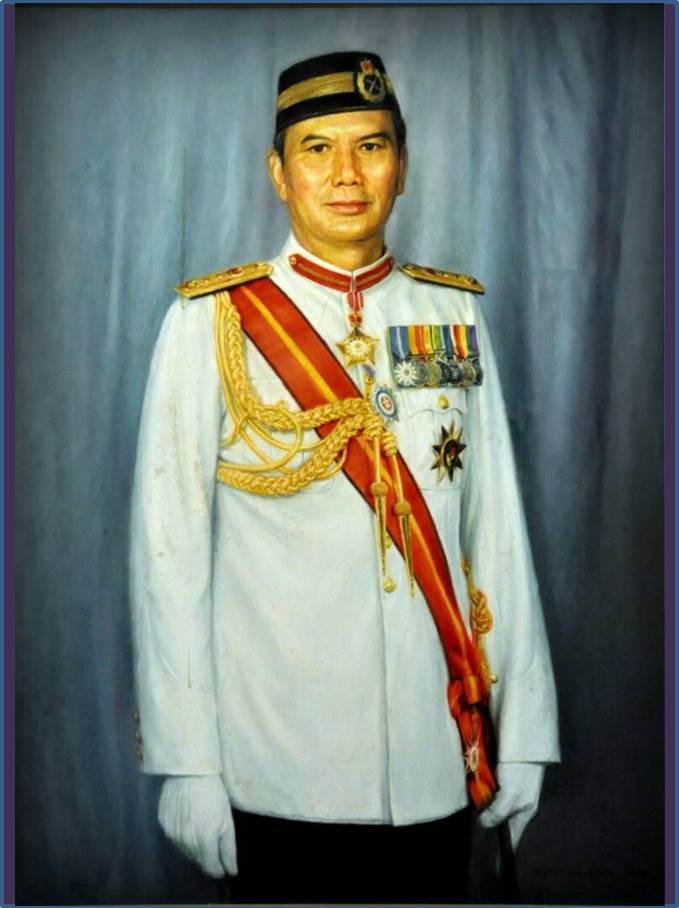 |
| Dato’ Leong. |
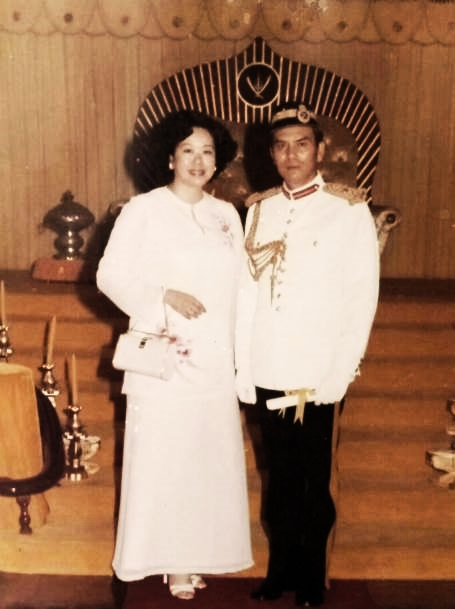 |
| Dato’ Leong with Datin May Lee. |
MACVA is very proud of his many achievements; notably being the first Malaysian officer to be commissioned into the Royals Signals and the first Chinese Chief Signal Officer of the Malaysian Royal Signals Regiment.
One of the Templer’s 12, he was a pioneer of the multiracial Malaysian Armed Forces; a shining example that encourages many others to join and served. May this tribute be a small token of appreciation for the sacrifices that he had made for King and country.
Signals Writing Team :-
Lt Col Dato’ Martin Kam Yoon Sang (Rtd), Maj David Chow Yun Kai (Rtd) and Maj Ng Koon Huat (Rtd).
Compiled by :-
Maj Wong Kwai Yinn (Rtd)
15 Nov 17
Pictures:
Lt Col Ir Raymond Goh (Rtd), Maj David Chow Yun Kai (Rtd) and Maj Ng Koon Huat (Rtd).
References:
A. Imbasan Rejimen Semboyan DiRaja 1952 – 1990. @Hakcipta Jabatanarah Semboyan 1993.
B. Royal Malay Regiment https://en.wikipedia.org/wiki/Royal_Malay_Regiment.
C. Malayan Emergency https://en.wikipedia.org/wiki/Malayan_Emergency.
D. Federation Regiment https://en.wikipedia.org/wiki/Federation_Regiment#Templer.27s_12_Superb_Men.


















